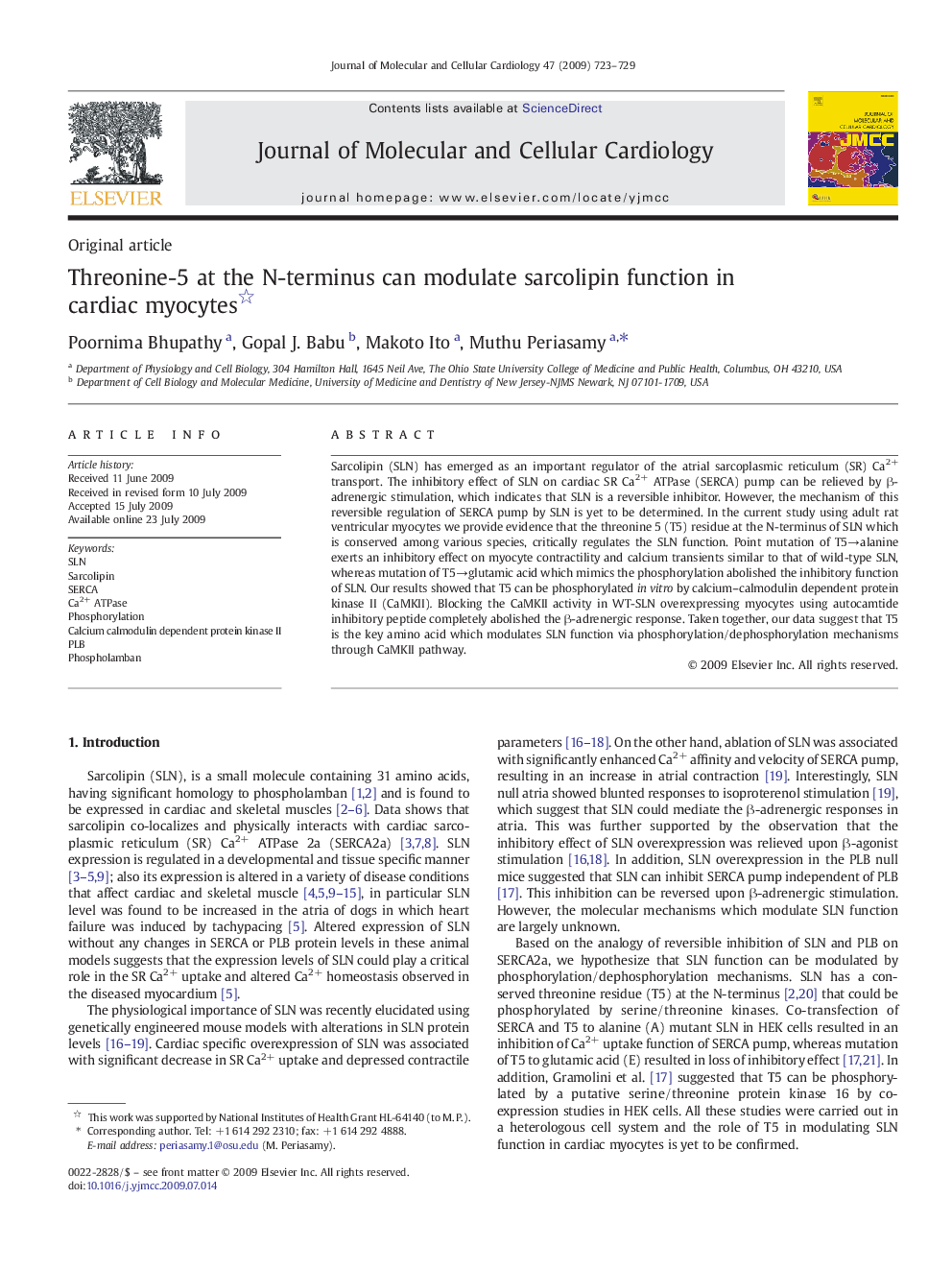| Article ID | Journal | Published Year | Pages | File Type |
|---|---|---|---|---|
| 10954225 | Journal of Molecular and Cellular Cardiology | 2009 | 7 Pages |
Abstract
Sarcolipin (SLN) has emerged as an important regulator of the atrial sarcoplasmic reticulum (SR) Ca2+ transport. The inhibitory effect of SLN on cardiac SR Ca2+ ATPase (SERCA) pump can be relieved by β-adrenergic stimulation, which indicates that SLN is a reversible inhibitor. However, the mechanism of this reversible regulation of SERCA pump by SLN is yet to be determined. In the current study using adult rat ventricular myocytes we provide evidence that the threonine 5 (T5) residue at the N-terminus of SLN which is conserved among various species, critically regulates the SLN function. Point mutation of T5âalanine exerts an inhibitory effect on myocyte contractility and calcium transients similar to that of wild-type SLN, whereas mutation of T5âglutamic acid which mimics the phosphorylation abolished the inhibitory function of SLN. Our results showed that T5 can be phosphorylated in vitro by calcium-calmodulin dependent protein kinase II (CaMKII). Blocking the CaMKII activity in WT-SLN overexpressing myocytes using autocamtide inhibitory peptide completely abolished the β-adrenergic response. Taken together, our data suggest that T5 is the key amino acid which modulates SLN function via phosphorylation/dephosphorylation mechanisms through CaMKII pathway.
Related Topics
Life Sciences
Biochemistry, Genetics and Molecular Biology
Cell Biology
Authors
Poornima Bhupathy, Gopal J. Babu, Makoto Ito, Muthu Periasamy,
